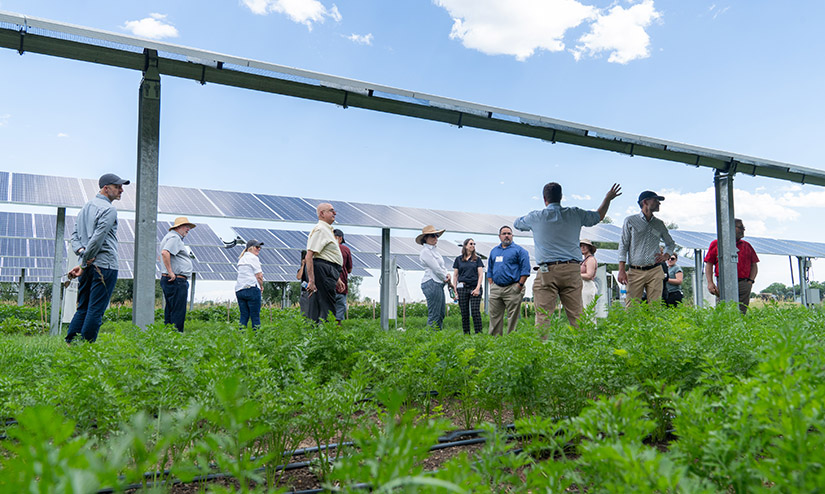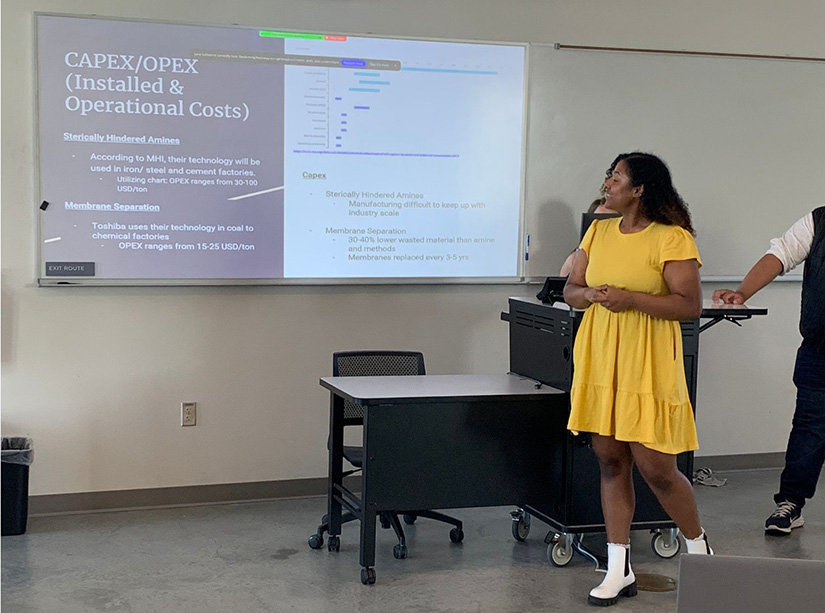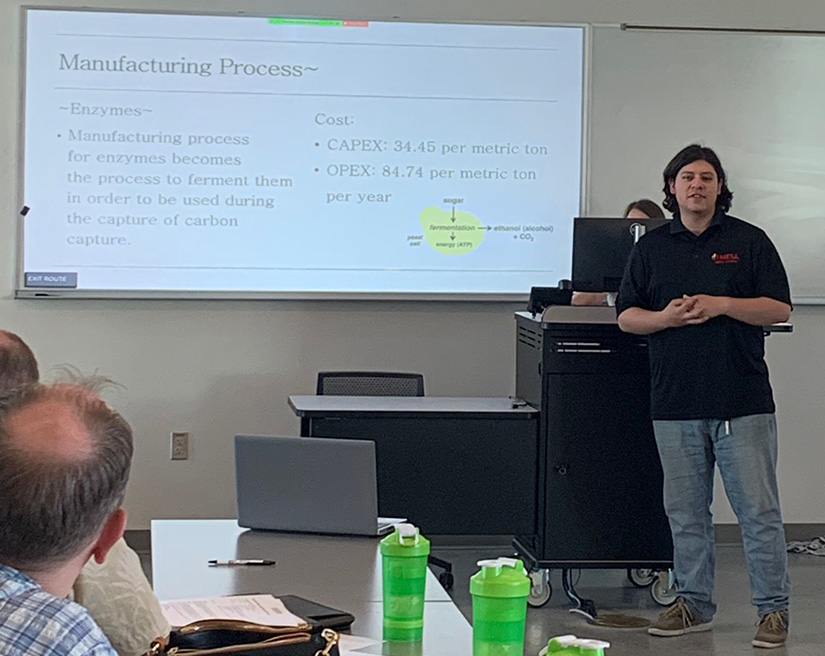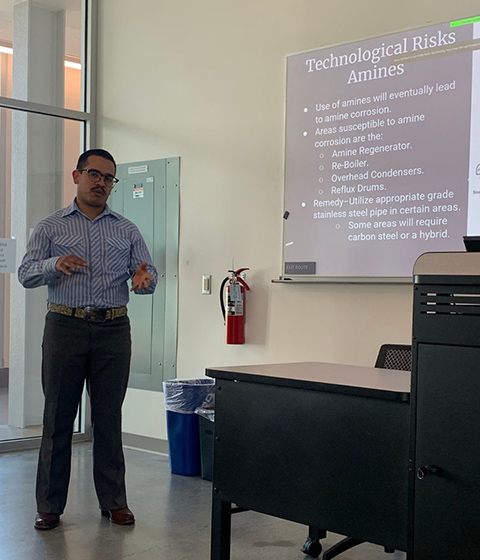In California, NREL Helps Kern County Embrace Clean Energy in Partnership With Community Colleges
For more than 100 years, Kern County, California, has relied on energy (oil and gas) and agricultural production to stimulate the economy. People in Kern County have a fierce sense of pride and a strong sense of identity as an energy producing community, and they are expanding that vision.
"Typically, people who were born and raised in Kern County choose to raise their families there and stay for the long term,"said James McCall, energy and environmental analyst for the National Renewable Energy Laboratory (NREL). "Bakersfield is a big city that has a small-town feel. A small town of more than 400,000 people, but that's small for California. The joke there was it was two hours from everything: Los Angeles, the beach, and the national parks are all two hours away."
Getting To Know Kern County
McCall first came to know the Kern County community just after college. He was a 21-year-old with a mechanical engineering degree from Colorado School of Mines and was given a $3 million project in the Belridge oil fields outside of Bakersfield.
"A welder who had been welding for 30 years asked me what to do,"McCall said. "I told him: ‘I have no idea. What would you do?' And he responded instantly, ‘Well I would do A, B, C, and D.' He was the one who had the solution. He just needed to be empowered to do it. It's a very smart community—they just need to be listened to."
That experience made a huge difference when NREL began working with the Kern Community College District (KCCD) in a partnership that aims to bring more education and training for opportunities for clean energy technologies into the communities.

The Partnership and Centers of Excellence
The idea for a partnership between NREL and KCCD came more than five years ago when a member of Congress sent NREL a letter, hoping the two entities would connect. Then, the president of KCCD's Bakersfield Community College, Sonya Christian, who is now chancellor of California Community Colleges, reached out to NREL asking for ideas on creating new curricula, workforce development opportunities, and research focused on clean energy and climate resilience.
"Dr. Christian is a true visionary,"said Ellen Morris, director of NREL's University Partnerships Program. "NREL was brought in to help think about what this partnership could be, and after conversations with Sonya and her team, we did some scoping and design work to see what resonated with them. We asked: ‘What could NREL do to support their vision to reach underserved populations and educate the future clean energy workforce that tied into the energy and climate goals of the county and the state?'"
Under Christian's leadership, KCCD established the California Renewable Energy Laboratory (CREL), an innovative coalition of public and private partners seeking to create a secure and stable energy future. Centers of Excellence were created on specific energy topics to create academic programs and workforce development opportunities that CREL sees as crucial to the future of Kern County. The inaugural centers include clean energy and grid resilience, carbon management, and clean transportation.
One of the first projects out of the gate is a CREL agrivoltaics project at the Regenerative Agriculture Education Center at Bakersfield College's Delano Campus, which focuses on regenerative farming practices and new farming techniques. The ribbon-cutting took place in November 2023, and detailed planning for the installation and the curriculum is underway.
"The new program at Delano is important because this region is also the nation's produce basket,"Morris said. "Agrivoltaics is appealing because it helps KCCD meet the agricultural students where they are at, with the new Delano campus in a rural area near the farms. It will give them education in cutting-edge agricultural technology and farming practice that's important for their careers."

Students Performing Research
Student-led research projects are a key aspect of the KCCD educational offerings in renewable energy. Kiara Gharatti is a 22-year-old student at Bakersfield Community College and participated in the carbon capture and sequestration project between Bakersfield faculty and local industry, with technical discussions for students led by NREL researchers Dan Ruddy and Andy Young. Teams of students performed research and received technical information and guidance from these NREL researchers.
"Our main goal was to research different carbon capture technologies,"Gharatti said. "We looked into the different types of technologies to see which the best is to use, how much it would cost to make it, and how it would affect the environment around it."
KCCD will use the students' recommendations for both a future carbon capture and sequestration project on one of the school campuses and to help create an education curriculum that will guide future students studying the same technology.
"It was a screening step for what technologies CREL will focus on,"Ruddy said. "It allowed CREL and the students to do that initial analysis and then get feedback from NREL researchers. CREL is examining two different pathways based on the students' findings."

Alina Ludian is a second-year student at Bakersfield Community College, and she participated in both the carbon capture and sequestration project as well as the microgrid research project.
"For the microgrid project, we split into groups and were given constraints,"Ludian said. "We worked through different technologies—a photovoltaic battery, a generator, wind, and more—to get a recommendation for usage knowing the constraints. You discover the highest output and the lowest output, as well as resilience and cost efficiency."
At the end of the projects, the students gave presentations to NREL experts, KCCD, and the CREL Steering Committee made up of local energy professionals. NREL collaborated with faculty to establish a curriculum that trains students to be prepared for clean energy jobs. Additionally, NREL will help translate the student presentations into demonstration projects and objectives that match with NREL experts.
"NREL being a leader in clean energy technology gives instructors at the colleges a crucial resource,"McCall said. "NREL's role is to provide a broader energy ecosystem experience along with access to leading research concepts."
The Rewards of Knowledge
Imparting this knowledge to the students helps build the clean energy workforce of the future, one of the main goals of the partnership.
"The commitment of the faculty and administration and the CREL team is a game changer," Morris said. "They make all kinds of possibilities happen for students in the classroom and in practice. They recognize the opportunity to really change someone's life—someone who may never see themselves in clean energy and more importantly someone who is looking to transform their communities."

For Ludian, learning about microgrids gave her a better understanding of why they are important and the scale of clean energy challenges.
"When you learn about something for the first time, you don't wrap your head around how large something is and how much it can impact your community,"she said. "Being in a research project as a student, it's not just that it opens up different kinds of practices—it introduces you to different kinds of people who think differently than you."
Gharatti appreciated seeing what she learned being applied into the actual workforce and research opportunities.
"I never really thought about all the behind-the-scenes things that come into play," she said. "Especially in Kern County, it's cool to see that first step on how it can be implemented for future generations."
Duplicating the Model
NREL and CREL hope the information gained from the project will allow other community college school districts to replicate the model around the country. There are already conversations happening with other community college districts across California, as well as districts in Idaho, Florida, and Illinois.
"Now we are moving from building the centers of excellence to actually starting to do research,"McCall said. "Then we can take that and broaden it to a much larger audience within the California ecosystem through CREL."
It is clear the lessons from this partnership are just beginning.
"I think it was a great eye opener into how a company and national laboratory facilities are run, "Gharatti said. "It's really cool to see the communication that goes on between different departments, and if you don't have the answer, being able to rely on others helps narrow down the pathways to take."
Learn more about NREL's University Partnership Program.
This article has been updated to reflect an editorial change made after its original publication.
Last Updated May 28, 2025
